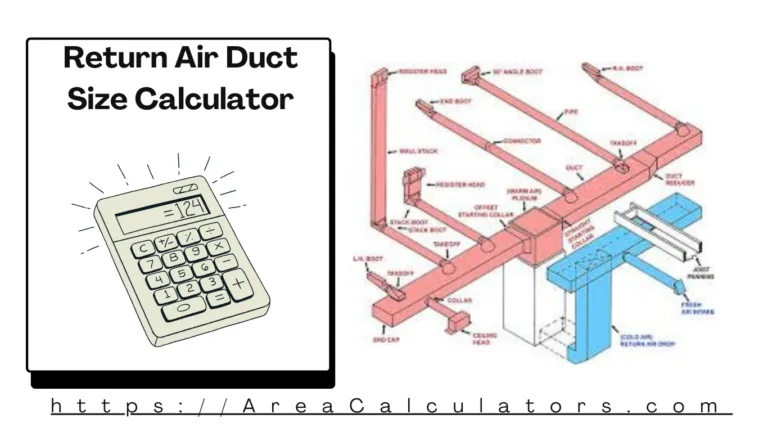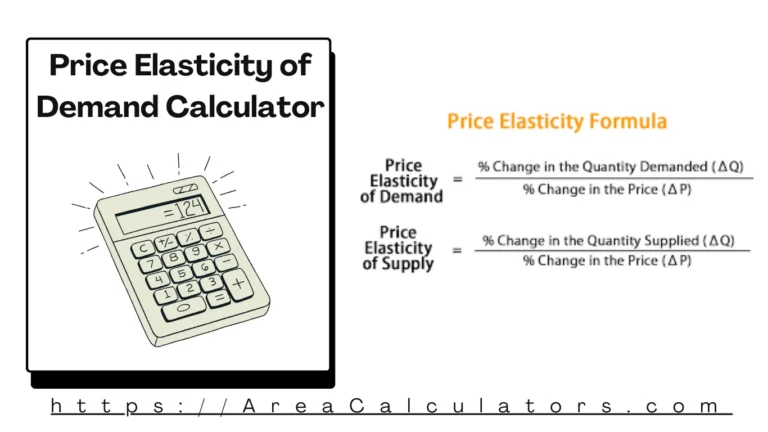When water enters a tank or system, how long does it stay there before flowing out? That’s not just a question of curiosity — it’s a key metric in treatment systems.
The Hydraulic Retention Time (HRT) Calculator helps you figure that out.
HRT tells you the average time a liquid remains in a container. It’s especially important in wastewater treatment, bio-reactors, and chemical mixing systems — where time directly affects how well a process works.
Think of it like brewing tea. The longer the water stays, the stronger the result. But leave it too long — or too short — and it might not work.
This calculator makes it easy to get that timing just right.
Why Hydraulic Retention Time Matters
Contents
- 1 Why Hydraulic Retention Time Matters
- 2 The Formula: How to Calculate HRT
- 3 Variable Table – Understanding the Terms
- 4 Real-Life Applications of the HRT Calculator
- 5 Benefits of Using the Calculator
- 6 Common Mistakes to Avoid
- 7 Tips for Accurate HRT Planning
- 8 Manual vs Digital HRT Calculations
- 9 FAQs:
- 10 Conclusion:
Retention time isn’t just a number. It’s a measure of system performance.
Here’s why HRT is important:
✅ Treatment Efficiency – Proper HRT ensures water is treated fully before discharge
✅ Process Control – You can’t manage what you don’t measure
✅ Design Accuracy – Helps size tanks and plan flow rates
✅ Compliance – Many treatment standards require minimum retention times
✅ Cost Optimization – Avoids over-sizing tanks or overusing resources
Without knowing how long water stays, you’re working in the dark.
The Formula: How to Calculate HRT
🧮 Formula:
HRT = V / Q
Where:
-
HRT = Hydraulic Retention Time (hours or days)
-
V = Volume of the tank or reactor (liters or cubic meters)
-
Q = Flow rate (liters per hour or cubic meters per day)
This formula assumes steady-state flow and fully mixed conditions — which is typical in many real-world setups.
Variable Table – Understanding the Terms
| Variable | What It Means |
|---|---|
| HRT | Time the fluid stays in the system (hr or day) |
| V | Volume of the tank or reactor |
| Q | Flow rate of fluid entering the system |
If you keep your units consistent, the calculator does the rest.
Real-Life Applications of the HRT Calculator
🚽 Wastewater Treatment Plants – Ensuring sewage stays long enough for proper biological breakdown
🧪 Chemical Mixers – Guaranteeing enough reaction time before discharge
🌾 Irrigation Systems – Designing holding ponds or buffer tanks
🐟 Aquaculture Tanks – Managing flow-through systems without stressing aquatic life
🏭 Industrial Effluent Systems – Meeting discharge regulations with verified retention times
Every flow system needs HRT — whether it’s public, private, or industrial.
Benefits of Using the Calculator
✅ Simple Inputs – Just volume and flow rate
✅ Quick Decisions – Know if your design meets time targets
✅ Better Planning – Helps size tanks and regulate inflow
✅ Improved Treatment – Especially in biological or chemical systems
✅ Compliance Made Easy – Match regulatory benchmarks with confidence
It’s a smart way to make water systems more predictable and more effective.
Common Mistakes to Avoid
❌ Mixing units – Don’t use liters with cubic meters unless converted
❌ Ignoring flow changes – If flow is not constant, average it properly
❌ Assuming full volume – Use effective volume, not total if sludge or media is present
❌ Overlooking design specs – HRT is just one part of system performance
❌ Treating HRT as exact – It’s an average, not a fixed value
Clean calculations begin with clean inputs.
Tips for Accurate HRT Planning
✅ Use calibrated meters for flow rates
✅ Regularly check tank volumes (especially if sludge accumulates)
✅ Monitor inflow and outflow regularly — update HRT as needed
✅ Pair HRT with other indicators (like BOD removal or nutrient levels)
✅ Document everything — for audits, safety, and improvements
A good HRT plan makes systems run smoother and last longer.
Manual vs Digital HRT Calculations
| Aspect | Manual Method | Calculator |
|---|---|---|
| Speed | Slower, needs unit conversions | Instant with correct inputs |
| Accuracy | Prone to math errors | Consistent and automatic |
| Best Use | Learning and classroom purposes | Real-time engineering and operations |
| Inputs | Requires math and attention to units | Simple — enter volume and flow |
Manual helps you learn. Digital helps you apply.
FAQs:
1. What does HRT actually measure?
It shows how long liquid stays in a system. Think of it as “residence time” for fluid.
2. What units should I use?
Use consistent units. For example: cubic meters and cubic meters/day — or liters and liters/hour.
3. Can HRT vary during the day?
Yes. If your inflow isn’t steady, HRT will vary. Use average flow for best results.
4. Is longer HRT always better?
Not always. Too long may cause stagnation or increase energy use. Aim for system-specific targets.
5. Is HRT only used in wastewater?
No. It’s also common in food processing, aquaculture, and chemical industries.
6. Does temperature affect HRT?
Not directly — but it affects how fast biological or chemical reactions happen during that time.
Conclusion:
The Hydraulic Retention Time Calculator gives you more than just a number. It gives you control.
By knowing how long water stays in a tank, you gain insight into performance, efficiency, and safety. You’re not guessing if your system works — you’re proving it.
From small treatment tanks to large industrial reactors, this calculator turns flow and volume into actionable clarity.
Plan smart. Operate safer. And let every drop of water do its job — one minute at a time.





